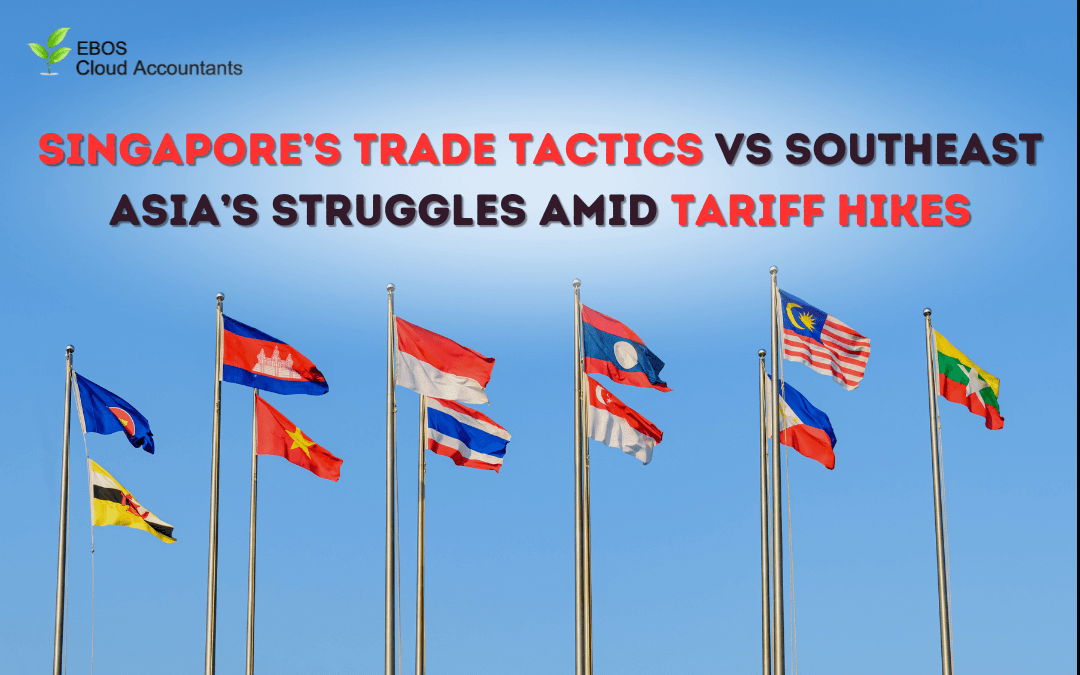As President Donald Trump’s 2025 tariff policy edges closer to implementation, countries around the world are scrambling to assess the damage. With import duties starting at 10% and scaling up based on trade imbalances, the global economy is bracing for a major realignment.
For Southeast Asia, the impact is anything but uniform. Countries like Vietnam, Cambodia, and Laos face sharp tariff hikes that threaten to derail export-led growth. Singapore, on the other hand, is deploying a different playbook—and it may just come out ahead.
The New Tariff Formula: Winners and Losers
Under Trump’s reciprocal tariff system, countries with the largest trade surpluses relative to their exports to the U.S. will face the steepest penalties. Here’s how the numbers break down:
-
Vietnam, Cambodia, Laos: 46%–49%
-
China: 34%
-
European Union: 20%
-
Mexico, Canada: Mostly exempt
-
Singapore & Malaysia: No confirmed rates yet
This aggressive move is poised to upend global supply chains, especially in Southeast Asia where export dependence is high.
Southeast Asia’s Tight Spot
For much of Southeast Asia, the tariff shock couldn’t come at a worse time. Nations like Vietnam and Cambodia have become manufacturing powerhouses by leveraging cost advantages to serve the U.S. market. But with nearly half of their exports now facing punishing tariffs, their competitive edge is at risk.
Vietnam, a key supplier of electronics and garments, could see major factory exits. Cambodia and Laos, heavily reliant on U.S. apparel orders, face a sudden cost spike that could wipe out thousands of jobs.
There’s little time to adapt. These countries lack the infrastructure and financial buffers needed to swiftly pivot to new markets or industries.
Singapore’s Trade Tactics: Smart, Strategic, Shielded
In contrast, Singapore’s trade approach is centered on agility, not volume. Here’s how it’s playing the long game:
✅ Diversified Trade Portfolio
Singapore isn’t reliant on a single sector or country. It trades globally, with a focus on high-value services, electronics, biotech, and finance.
✅ Strategic U.S. Relationship
The 2004 U.S.-Singapore Free Trade Agreement (FTA) shields much of Singapore’s exports. This longstanding deal, paired with diplomatic goodwill, places Singapore in a strong negotiating position.
✅ Re-Export and Logistics Hub
Rather than being a major manufacturer, Singapore acts as a hub for regional trade, re-exports, and supply chain management—functions less directly affected by tariffs.
✅ Policy Agility and Forward Planning
Singapore’s government has a track record of pivoting quickly. From investing in automation to attracting high-tech industries, it’s already positioning itself for a post-tariff global economy.
The Bigger Picture: Shifting Power in the Region
The regional disparity could accelerate supply chain re-routing from vulnerable nations to more stable trade environments. Malaysia, with its expanding manufacturing base and moderate exposure, may also benefit.
But Singapore’s value lies beyond production—in connectivity, trust, and efficiency. Multinational companies seeking regional bases or financial headquarters are likely to see Singapore as a safe harbor in uncertain times.
Conclusion: The Gap Widens
The 2025 tariff hikes are a stress test for global trade systems—and Southeast Asia is feeling the strain. While Vietnam, Cambodia, and Laos scramble to cushion the blow, Singapore’s smart trade tactics and long-term planning set it apart. In a region struggling to adapt, Singapore isn’t just surviving. It’s strategizing to lead.
Enjoyed this article? Curious to learn more about incorporation? Click here for more insights!







